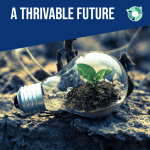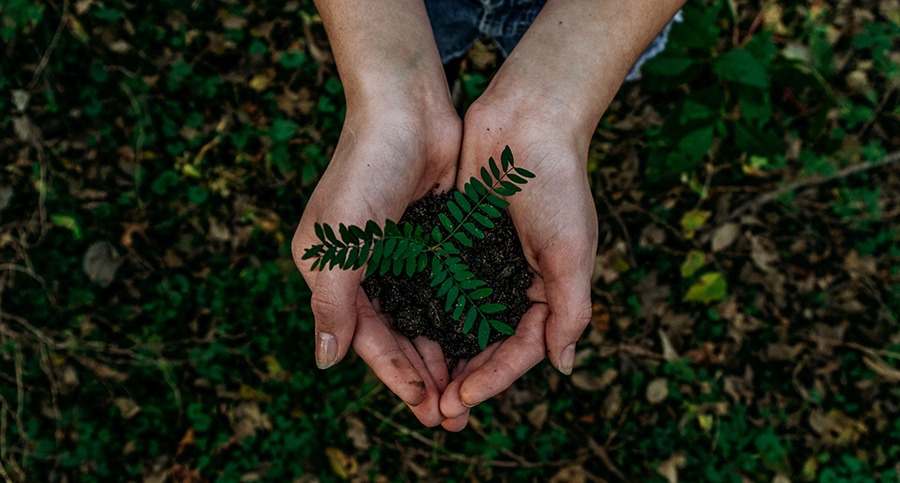Introduction: From Sustainability to Thrivability
Adopting a sustainable lifestyle involves making everyday choices that reduce our environmental impact while maintaining or even improving our quality of life. Researchers and United Nations reports highlight several core areas of action – from daily eco-friendly habits and waste reduction to cutting carbon emissions and practising mindful consumption – as crucial to living more sustainably (UNEP, 2011). However, sustainability alone is no longer enough.
A thrivable lifestyle goes beyond minimising harm—it regenerates ecosystems, strengthens communities, and supports long-term well-being. With a thrivable mindset, everyday choices transform into powerful steps toward a better future, blending the best of a sustainable lifestyle with regenerative action.
| Feature | Sustainable | Thrivable |
| Core Motivation | Solving societal and environmental problems while ensuring business success | Prosperity for the entire ecosystem in the long-term |
| Main Goal | Merging entrepreneurship with sustainability (anthropocentric view) | Creating prosperity through ecosystem regeneration (life-centric view) |
| Economic Goals | Means and ends | Means and long-term ends |
| Non-Market Goals | Support sustainable development | Steer long-term economic prosperity |
| Ecosystem Boundaries | Systemic boundaries | Osmotic boundaries (open collaboration) |
| Governance | Centralised by a focal organisation | Informal, participatory governance |
Source: Lund University
A sustainable lifestyle focuses on responsible choices to minimise harm. A thrivable lifestyle fosters conditions where people and nature flourish together, like a well-tended garden—instead of merely surviving, it thrives. Just as a healthy garden needs rich soil, biodiversity, and careful resource use, a thriving life depends on mindful consumption, ethical production, and sustainability. Therefore, embracing thrivability encourages long-term positive impact rather than short-term survival.
How Thrivable Living Builds On Sustainable Choices
Many people wonder how they can evolve their sustainable lifestyle into a more thrivable lifestyle. The good news is that even small adjustments can have a substantial impact.
By adopting zero-waste habits, eco-friendly transportation, and conscious consumption (Touchette & Nepomuceno, 2020), individuals extend the principles of a sustainable lifestyle into a regenerative one. Companies that embrace circular economy (UNEP, 2024) principles and eco-housing innovations contribute to both sustainability and thrivability. Ultimately, this shift benefits both people and the planet.
This article explores the principles that enhance a sustainable lifestyle into a thrivable lifestyle, with practical choices for a flourishing future. By understanding how consumption, production, and waste can be optimised, it is possible to create a positive, long-lasting impact. More importantly, individuals and organisations can work together to drive meaningful change.
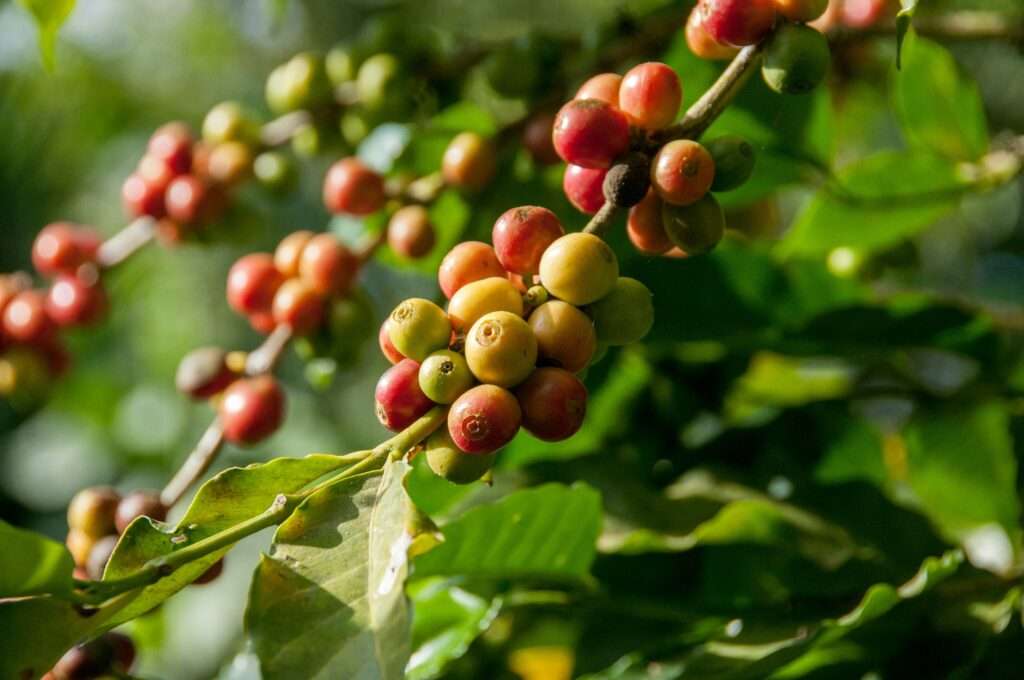
Source: Unsplash
Thrivable Living in Action: Lessons from Nature
A thrivable lifestyle builds upon the core values of a sustainable lifestyle but extends beyond sustainability by aiming to create a world where we do not just survive but flourish. Like sustainability, thrivability is not an isolated action but a holistic approach that connects individual actions with broader environmental and social systems.
1. Nourishing The Soil: Sustainable Lifestyle Choices That Regenerate Nature
Healthy soil is the foundation of a thriving garden. Without it, plants struggle, nutrients deplete, and biodiversity suffers. Similarly, individual consumption habits shape the health of the planet.
These sustainable lifestyle pillars become even more impactful when they regenerate local economies and ecosystems. Supporting local farms, reducing plastic packaging, and choosing seasonal produce fosters resilient food systems—core components of a thrivable lifestyle.
Eat Seasonal, Shop Local, And Reduce Waste For Conscious Living
- Why it matters: Industrial food production contributes significantly to deforestation, biodiversity loss, and carbon emissions. Moreover, the excessive use of pesticides and fertilisers in large-scale farming further depletes soil health and contaminates water sources (Bibi et al., 2024). Additionally, long-distance food transportation increases reliance on fossil fuels, contributing to global warming. By making conscious food choices, individuals can actively participate in reducing these environmental impacts.
- Thrivable action: Supporting local, seasonal produce lowers food transport emissions, strengthens regional economies, and fosters resilience. Seasonal foods also need fewer preservatives and less energy-intensive storage, making them a healthier, more sustainable choice. As a result, consumers can enjoy fresher, more nutrient-rich meals while simultaneously lowering their carbon footprint (Singh et al., 2024).
- Practical step: Farmers’ markets, community-supported agriculture (CSA) programs and low-waste grocers offer sustainable alternatives to conventional supermarket shopping. In addition, opting for low-waste grocers reduces plastic waste, aligning with a zero-waste lifestyle.
- Example: France’s Too Good To Go (Sgroi et al., 2024) app connects consumers with surplus food from restaurants and stores. This reduces waste and makes nutritious meals more affordable. Consequently, this initiative helps address food insecurity while reducing environmental harm.
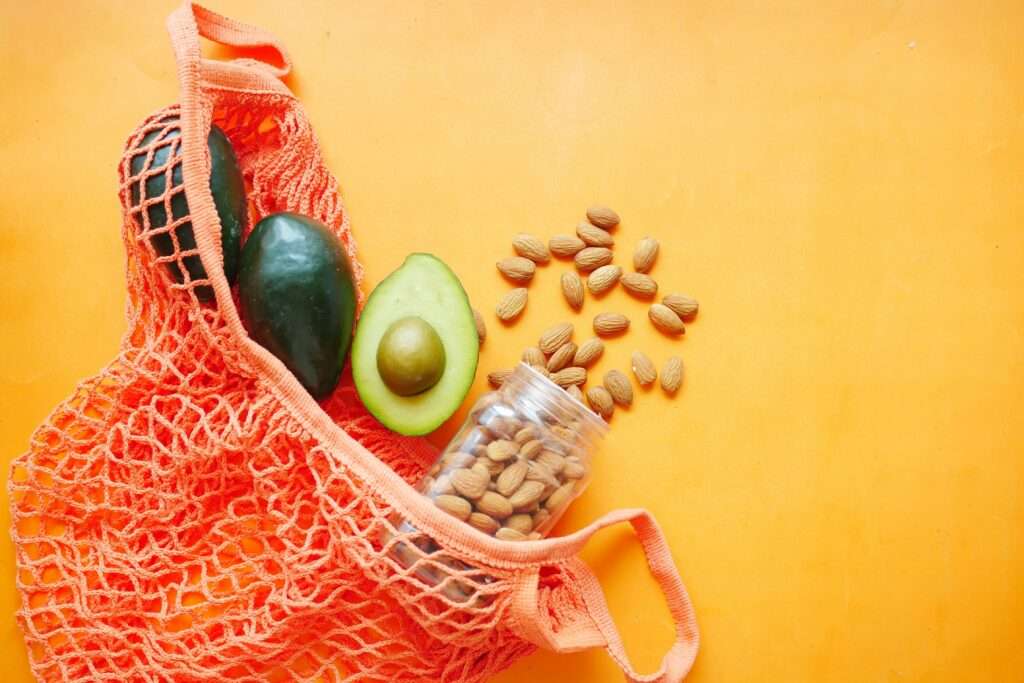
Source: Unsplash
Choose Plastic-Free And Circular Products For A More Sustainable Lifestyle
A thrivable lifestyle goes beyond simply reducing plastic use—it actively supports circular businesses that transform waste into valuable resources, keeping materials in use and closing the loop on product lifecycles.
- Why it matters: Plastics do not decompose naturally, persisting in landfills and oceans for centuries. As a result, microplastics have contaminated food and water systems, affecting both human health and marine life. Furthermore, plastic production relies heavily on fossil fuels, increasing greenhouse gas emissions and worsening climate change. Consequently, reducing plastic dependency is an essential step toward a healthier planet and a more thrivable future.
- Thrivable action: Opting for reusable, compostable, or refillable alternatives significantly helps to reduce plastic waste. Additionally, supporting businesses that prioritise sustainable packaging and materials strengthens the demand for innovative, environmentally responsible solutions. Moreover, choosing products with minimal packaging, avoiding single-use plastics, and supporting policy changes can create a meaningful impact.
- Practical step: Zero-waste stores and brands with ‘take-back’ programs support a circular economy by keeping materials in use longer. In addition, companies that embrace circularity help transform waste into valuable resources, further reinforcing sustainability efforts across various industries.
- Example: Patagonia’s Worn Wear (Shourkaei et al., 2023) repairs and resells old gear, extending its life and reducing textile waste. This initiative encourages responsible consumer behaviour and fosters a culture of thrivability.
2. Planting Wisely: Responsible Production In A Thrivable Lifestyle
A responsible gardener selects plants carefully, ensuring that each one contributes to the ecosystem. In the same way, products, businesses, and even family choices must be made with long-term impact in mind.
Build Zero-Waste And Circular Businesses To Support
While a sustainable lifestyle focuses on reducing personal waste, a thrivable lifestyle reimagines production itself. Businesses can shift from linear to circular models, keeping materials in use longer and reducing virgin resource extraction.
- Why it matters: The traditional linear economy—take, make, waste—is unsustainable. It depletes resources, increases landfill waste, and harms the environment. A circular economy reduces waste by keeping materials in continuous use. Furthermore, shifting to circular business models helps mitigate climate change, lowers production costs, and fosters long-term economic resilience.
- Thrivable action: Businesses should proactively design out waste, integrate sustainable materials, and develop take-back systems (Andersen et al., 2022) that encourage reuse and remanufacturing. Additionally, adopting closed-loop supply chains ensures that materials and products re-enter the market, further reducing environmental impact. Encouraging consumer participation through incentives, education, and transparent supply chains is essential to making circular models successful.
- Practical step: Companies can offer product-as-a-service models, where customers lease or subscribe instead of owning, ensuring resource circulation. Moreover, developing repair services and upcycling initiatives helps extend product life cycles while reducing the need for new raw materials.
- Example: IKEA, one of the world’s largest furniture retailers, is transitioning toward a circular business model (Bouhia, 2022) by offering buy-back and resell programs. Customers can return used IKEA furniture, which is then refurbished and resold, extending product lifespans and reducing landfill waste. Additionally, IKEA is investing in recycled and renewable materials, aiming to make its entire product range circular and climate-positive by 2030. Through these initiatives, the company is minimising waste, lowering carbon emissions, and promoting a more sustainable lifestyle while also fostering consumer engagement in circular consumption habits.

Source: Unsplash
Eco-Housing: Eco-Friendly Homes With Thrivable Impact
A sustainable lifestyle prioritises energy efficiency, but thrivable housing also regenerates its environment, using natural materials and harmonising with local ecosystems.
- Why it matters: Buildings account for 34% of global energy use, making them major carbon emitters (Schoenefeld et al., 2025). In addition to their energy use, construction materials and waste production create long-term environmental challenges. Without a shift toward more sustainable practices, urban expansion will continue to deplete natural resources and increase pollution.
- Thrivable action: Transitioning to eco-friendly housing solutions involves using low-impact materials, integrating passive energy systems, and optimising efficient design principles. By embracing these approaches, homeowners and communities can actively reduce their environmental footprint while creating healthier living spaces. Moreover, designing for sustainability enhances long-term affordability, as energy-efficient structures lower utility costs and require fewer resources for maintenance.
- Practical step: There are several ways individuals and businesses can support eco-housing initiatives. Investing in renewables like solar panels and wind turbines lets households generate electricity while reducing fossil fuel reliance. Additionally, improving insulation and incorporating natural ventilation systems can significantly decrease energy consumption for heating and cooling. Choosing reclaimed or sustainably sourced materials ensures that new construction and renovations minimise waste and deforestation (Jha, 2024).
- Example: The Earthship Movement (Sudhakaran et al., 2023) exemplifies self-sufficient housing that prioritises ecological harmony. These innovative homes are constructed from recycled materials, including tyres, bottles, and reclaimed wood, reducing construction waste. Furthermore, they utilise passive solar design to maintain comfortable temperatures year-round while harvesting rainwater for household use.
Raising Children In A Thrivable Way
A sustainable lifestyle is not just about the choices adults make today—it’s also about nurturing the next generation to value the planet, embrace eco-friendly habits, and contribute to regenerative change. A thrivable lifestyle goes a step further, encouraging children to not only reduce harm but to actively participate in restoring nature, supporting their communities, and imagining innovative solutions for a healthier planet. By combining sustainable lifestyle values with hands-on, nature-based learning, parents and educators can raise future changemakers equipped to thrive in a rapidly evolving world.
- Why it matters: Future generations will face complex climate challenges. Raising eco-conscious children prepares them to adapt and contribute to a sustainable world. Early exposure to green living shapes lifelong habits, critical thinking, and a respect for nature.
- Thrivable action: Parents and educators can encourage eco-friendly habits, ethical consumption, and a strong connection to nature. Engaging kids in waste reduction, gardening, and responsible choices fosters ownership and responsibility. Schools and communities play a vital role in this education, offering programs that teach composting, recycling, and conservation strategies. Additionally, engaging in family activities such as hiking, tree planting, and DIY upcycling projects reinforces these values through experiential learning (Lee, 2024).
- Practical step: Start small by setting up a home recycling station, planting a vegetable garden, or organising neighbourhood clean-up events. Encourage children to track their waste reduction efforts and make eco-friendly choices part of everyday life.
- Example: Sweden’s outdoor preschools (Skogsmulle schools) immerse children in nature year-round, offering hands-on experiences that nurture environmental awareness and resilience (Norinder, 2022). Some schools emphasise outdoor play, survival skills, and ecological knowledge, helping children appreciate nature as part of their lives.
3. Watering Thoughtfully: Resource Efficiency In A Thrivable And Sustainable Lifestyle
In a garden, too much or too little water leads to imbalance. Likewise, inefficient use of resources strains natural systems. Thrivable living requires efficient energy, water, and material use.
A sustainable lifestyle promotes cycling and public transit to reduce emissions. A thrivable lifestyle envisions entire cities designed for human-powered mobility and nature-based solutions, fostering healthier urban ecosystems.
Eco-Transportation: Green Lifestyle Mobility For Lower Carbon Footprints
- Why it matters: Transportation accounts for nearly 20% of global carbon emissions, contributing significantly to air pollution and climate change (Azhar et al, 2024). As cities continue to expand and populations grow, the demand for efficient and sustainable transportation solutions becomes even more pressing. By transitioning to eco-friendly transportation options, individuals and communities can play a pivotal role in mitigating environmental damage (Ogwu & Thapa, 2024).
- Thrivable action: Walking, cycling, or using public transport reduces emissions, promotes health, and eases traffic. Choosing low-emission travel improves urban sustainability and livability.
- Practical step: For short trips, opt for biking or walking instead of driving. Additionally, exploring public transportation options such as buses, trains, or shared mobility services can significantly lower one’s carbon footprint (Arbeláez Vélez, 2023).
- Example: Amsterdam’s urban planning prioritises cycling over cars, resulting in more bicycles than residents (Den Hoed & Jarvis, 2021). Some cities have transformed into global models for sustainable transport, proving that infrastructure and policies can create thriving, eco-friendly spaces.
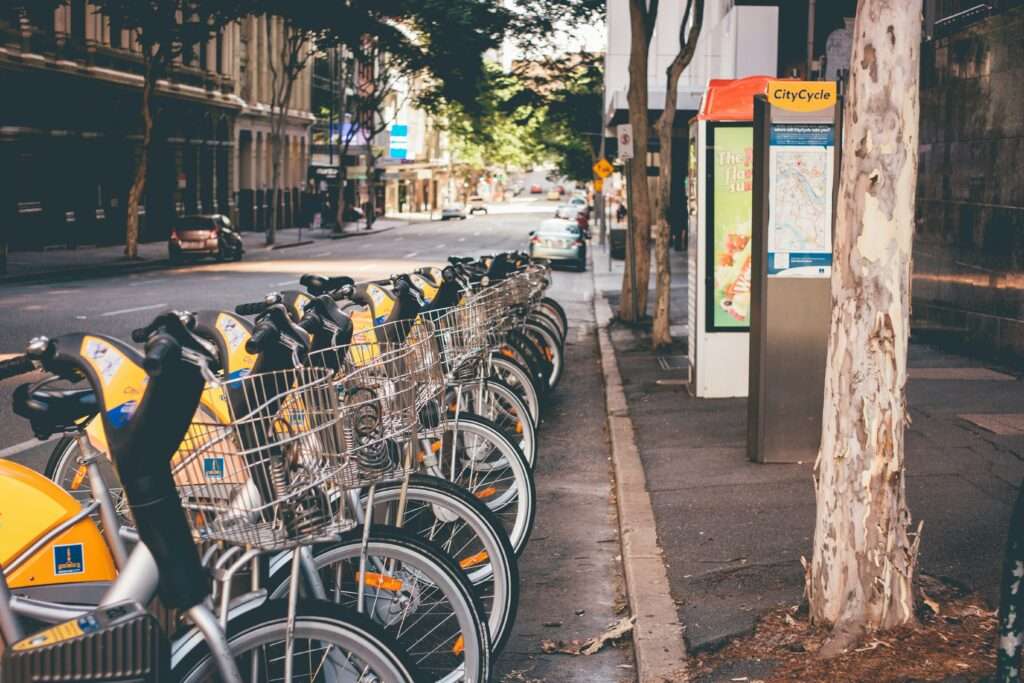
Source: Unsplash
Making Homes Carbon Neutral For A More Sustainable Lifestyle
Carbon-neutral homes fit within a sustainable lifestyle framework, but in a thrivable lifestyle, homes also produce clean energy, support biodiversity, and regenerate surrounding environments.
- Why it matters: Household energy use is a major source of emissions (Khanna et al., 2021). Energy inefficiency strains the environment and raises costs, making greener alternatives essential.
- Thrivable action: Installing solar panels, improving insulation, and using smart appliances lower carbon footprints and long-term utility costs (Shahee et al., 2024). Additionally, adopting passive design strategies, such as strategically placed windows for natural light and ventilation, enhances energy conservation efforts (Papadakis & Katsaprakakis, 2023)
- Practical step: Transitioning to a carbon-neutral home can start with simple yet impactful steps. First, conducting an energy audit allows homeowners to identify inefficiencies and areas for improvement. Next, sealing air leaks, upgrading to double-glazed windows, and using energy-efficient lighting further reduce consumption.
- Example: Germany’s Passivhaus buildings use 90% less energy than conventional homes (Moreno-Rangel, 2021). Their superior insulation, airtight design, and airflow optimisation reduce energy use while improving air quality and comfort.
4. Encouraging Biodiversity: Community And Environmental Health In A Sustainable Lifestyle
A thriving garden is diverse, with pollinators, plants, and soil life working in harmony. Similarly, a thrivable society requires strong community ties, regenerative economies, and knowledge-sharing.
A sustainable lifestyle values organic produce. A thrivable lifestyle supports farms that actively restore soil health, increase biodiversity, and sequester carbon.
Support Regenerative Agriculture For A Sustainable Lifestyle And Thrivable Future
- Why it matters: Conventional farming depletes the soil, strips essential nutrients, and leads to long-term environmental degradation (Kartini et al., 2024). In contrast, regenerative agricultural practices rebuild soil health, enhance biodiversity, and create more resilient ecosystems (Khangura et al., 2023). By shifting toward sustainable farming methods, we can ensure food security while simultaneously addressing climate change and ecosystem depletion (Wijerathna-Yapa & Pathirana, 2022).
- Thrivable action: Supporting permaculture, agroforestry, and small-scale organic farms contributes to the development of sustainable food systems. These approaches prioritise soil health, carbon sequestration, and holistic ecosystem management.
- Practical step: Transitioning to regenerative agricultural methods can start with small, actionable steps. Supporting regenerative farming, advocating for sustainable land policies, and educating communities on composting can restore soil health.
- Example: Farmers implementing multi-species cover cropping have enhanced soil fertility and increased yields (Malisch et al., 2024). This regenerative agriculture practice benefits both the environment and the economy. Integrating traditional ecological knowledge with modern sustainability practices fosters resilient agricultural landscapes (Adefila et al., 2024).

Source: Unsplash
Participate In A Circular Economy To Enhance A Sustainable Lifestyle
A sustainable lifestyle encourages recycling. A thrivable lifestyle fosters collaborative consumption, keeping products in circulation far longer and reducing demand for virgin materials.
- Why it matters: Fast fashion and consumer goods industries cause massive waste, polluting ecosystems and depleting resources (Singh & Bansal, 2024). Shifting to a circular economy reduces harm by keeping products in use longer (Yang et al., 2022).
- Thrivable action: Embracing a circular economy means supporting businesses that implement closed-loop systems, offer repair services, and encourage upcycling initiatives. These practices help extend product lifecycles, lower overall consumption and reduce dependency on virgin materials.
- Practical step: Support the circular economy by buying second-hand, exchanging products, and choosing brands with recycling programs.
- Example: London’s Library of Things lets people borrow items like tools and appliances instead of buying them (Silva & Mont, 2025). This reduces consumption, prevents waste, and promotes shared resources.
Conclusion: A Thrivable Future Begins Today
A sustainable lifestyle focuses on reducing harm, conserving resources, and making mindful choices. However, thrivable living takes it a step further by actively regenerating ecosystems, strengthening communities, and fostering a future where both people and nature flourish together (Lomas et al., 2025).
The transition from sustainability to thrivability requires a shift in mindset—moving beyond minimising impact to creating positive, long-term change (Edmans, 2022). This means supporting circular economies, engaging in regenerative agriculture, designing eco-friendly homes, and raising environmentally conscious children. By integrating these principles into daily life, individuals and businesses can contribute to a thriving planet that benefits future generations.
Each choice, no matter how small, plays a role in shaping a regenerative world. Whether it is choosing plastic-free alternatives, supporting local economies, or participating in community sustainability efforts, every action helps to build a more resilient future.
Thrivability is not just an ideal; it is a practical, everyday approach to life. By making conscious, regenerative choices, we move beyond survival to a world that flourishes. Now is the time to embrace the shift—together, we can cultivate a future where both people and the planet thrive (Ritchie, 2024).
Achieving the UN Sustainable Development Goals (SDGs)
A thrivable lifestyle contributes to the UN Sustainable Development Goals (SDGs) by promoting regeneration, resilience, and long-term well-being. Responsible food choices enhance food security and sustainable agriculture (SDG2 Zero Hunger, SDG12 Responsible Consumption and Production), while reducing waste and plastic pollution protects marine and terrestrial ecosystems (SDG14 Life Below Water, SDG15 Life on Land). Energy-efficient homes and green mobility solutions advance clean energy and sustainable urban development (SDG7 Affordable and Clean Energy, SDG11 Sustainable Cities and Communities), while circular economy principles foster innovation, economic resilience, and responsible production (SDG8 Decent Work and Economic Growth, SDG9 Industry, Innovation and Infrastructure, SDG12 Responsible Consumption and Production). Educating future generations on conscious consumption and environmental responsibility strengthens inclusive, quality learning (SDG4 Quality Education). By integrating these actions, thrivable living not only aligns with sustainability efforts but also ensures a flourishing future for both people and the planet.
The Thrive Framework: Fundamental Focus Factors for a Thrivable Future
The circular economy shifts consumption from wasteful to regenerative, as seen in Patagonia’s Worn Wear and IKEA’s take-back programs, demonstrating Values-Based Innovation in action. Similarly, eco-housing solutions like Earthships embody Strong Sustainability, restoring resources rather than depleting them.
Amsterdam’s eco-transportation model integrates the Multi-Capital principle, balancing environmental, economic, and social benefits. Meanwhile, regenerative agriculture, such as Costa Rica’s soil restoration efforts, aligns with Regenerative Economic principles, proving that sustainability can go beyond harm reduction to actively improve ecosystems.
Finally, Sweden’s nature-based education reinforces Integral Thinking, embedding sustainability into early learning to shape future generations who don’t just sustain but thrive. Thrivability means shifting from reducing harm to fostering prosperity—for people, businesses, and the planet.
A Thrivable Future Starts with Everyday Choices
A sustainable lifestyle provides the essential foundation for a thrivable lifestyle. Like a thriving garden needs balance and renewal, a thriving world relies on conscious consumption, ethical production, and resource efficiency.
By embracing zero-waste habits, circular production, and regenerative solutions, individuals and businesses can build a future that not only sustains itself but also thrives (Third, 2024).
To evolve from sustainable lifestyle practices to thrivable lifestyle solutions, a collective mindset shift—one where we actively restore, regenerate, and redefine what it means to live well—is required. More resources and guidance on green living and sustainable solutions can be found on the THRIVE Platform.
For further insights on green living, sustainable consumption, and regenerative solutions, explore THRIVE’s articles and community resources, volunteer with THRIVE Project, and participate in THRIVE Framework Workshop or Thrivability Matters Free Webinar Series.





